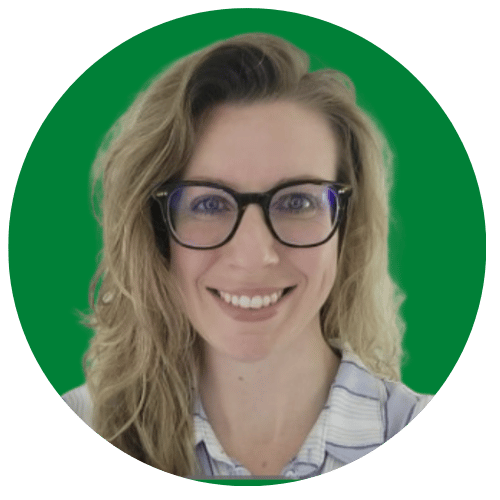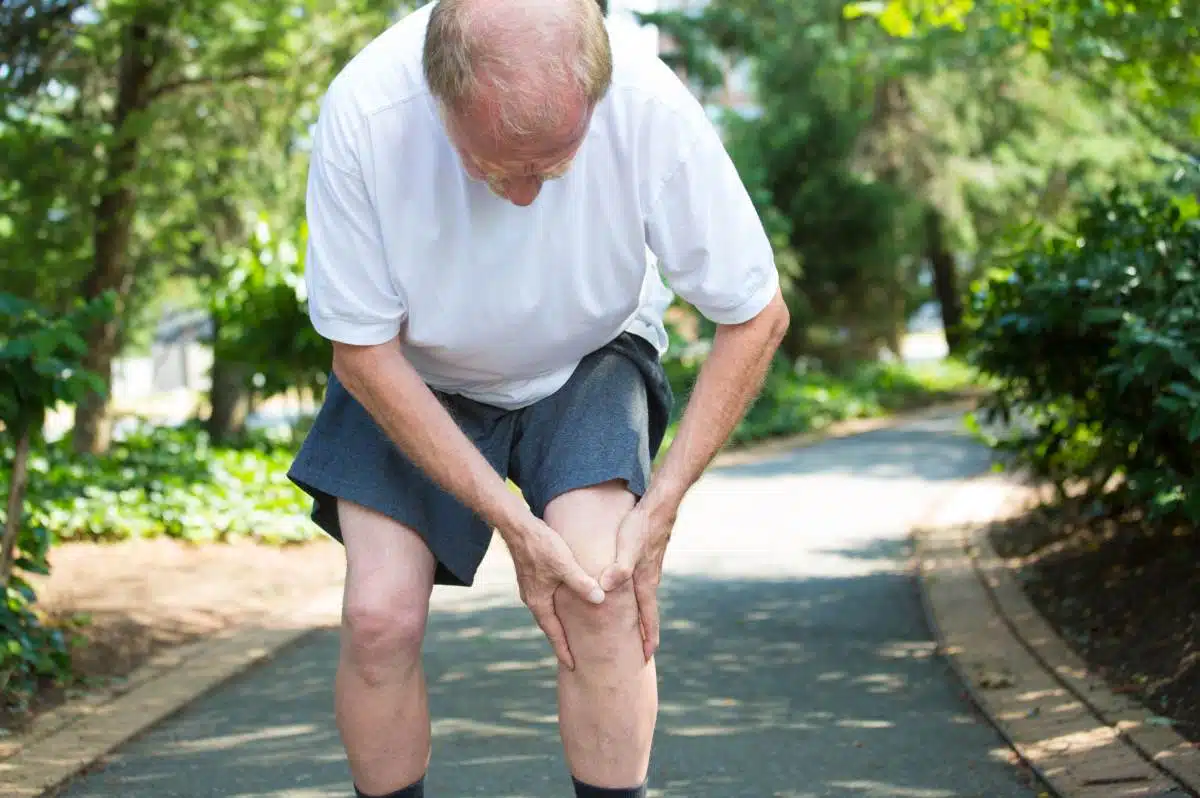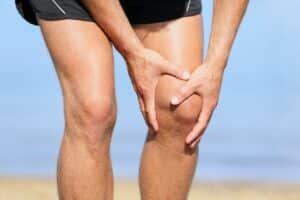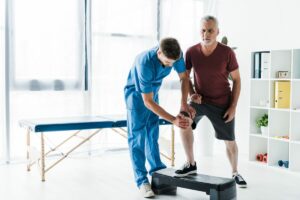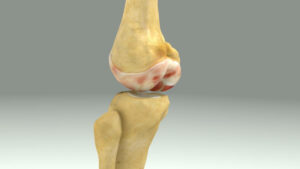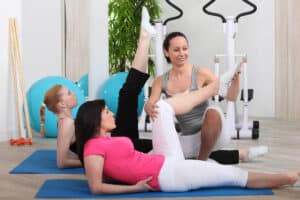Free download: Top 10 Natural & Easy Remedies for Joint Pain from Home. Learn these helpful remedies.
Have you ever heard of the phrase “Going weak in the knees?”
While this catch phrase may normally have a deeper romantic or alternative emotional meaning to it, weak knees are not something to take lightly!
Weakness in one or both knees can occur for a variety of reasons. It may come on suddenly or gradually. Sometimes there may be associated knee pain, while other times there may be no knee pain involved at all.
Our goal here is to identify the possible causes of weak knees, when to consult with your doctor, and in the right circumstances how to strengthen weak knees for healthier joints.
Table of Contents
Causes of Weak Knees
What can cause weak knees?
Remember that the knee joints are each a hinge joint made up of three bones:
- Femur, or thigh bone
- Tibia, or shin bone
- Patella, or knee cap
These bones create the tibiofemoral and patellofemoral joints, which form what we know as the knee joint.
Multiple muscles, tendons and ligaments surround the knee to provide support, stability and mobility of the knee. We additionally can consider the knee joint includes cartilage, menisci, synovial fluid and other soft tissue structures necessary for smooth movement at the knee joint.
Why are we reviewing this anatomy?
I’ll tell you why!
You have to understand the basics of knee anatomy to figure out the potential underlying cause of weak knees. Then once you know the cause, it will be easier to treat weak knees.
Now that we have that out of the way, let’s talk about some potential causes of weak knees.
A. General Muscle Weakness and Deconditioning
A lack of a consistent exercise routine and leading a more sedentary life can lead to many knee problems, including gradual development of weak knees due to weak muscles that fatigue very easily.
When this is found to be the root cause of your weak knees, you may or may not have knee pain associated with it. If knee pain is present, it likely won’t have anything to do with a particular incident or injury, but more of a gradually knee pain development.
If the muscles that surround the knees aren’t working optimally and aren’t supporting the knee joints the best, then this muscle weakness can create problems in the joint itself. This can even lead to knee instability if not properly addressed.
While there are many muscles that connect to the knee, the primary ones we usually think of when it comes to knee movement and strength include the quadriceps, hamstrings, and gastrocnemius calf muscle.
It’s important to keep the muscles that surround and support the knees properly stimulated to avoid weak knees and help to prevent knee pain.
B. Arthritis

Arthritis is a leading cause of knee weakness and increased risk of knee injuries.
While there are many types of arthritis that exist, the most common encountered is osteoarthritis. Many links have been found between knee osteoarthritis and subsequent abnormalities with the way the knee joint works.
Other types of arthritic conditions to consider include the following:
- Rheumatoid arthritis
- Psoriatic arthritis
- Gout
More than one of the above-mentioned types of arthritis may have an autoimmune and/or inflammatory component to them.
While not technically arthritis, it’s worth mentioning that other widespread physical conditions can cause knee joint pain and weak knees, such as lupus and fibromyalgia.
If the quality and status of a joint is questionable, this will affect the mechanics of how the joint moves. If the joint itself is struggling to move correctly, this can affect all surrounding soft tissue attachments (e.g., muscles, tendons, ligaments) and their ability to support the joint.
If your knee isn’t supported and additionally is hurting when you try to move it, then you can become sedentary as a result. This inactivity will further increase muscle weakness and your weak knees as a whole.
C. Orthopedic Knee Injury
Knee injuries, especially when related to sports injuries, are a common cause of weak knees.
While a wide range of injuries can occur, common knee injuries include but are not limited to the following:
- Sprained or torn ligaments
- Strained muscles and tendons
- Tendon tears
- Meniscus tears
- Fracture
- Torn cartilage
- Overuse injury, like patellar tendonitis
The list could go on and on!
Orthopedic knee injuries can create more of a sudden pain onset and sudden knee weakness because of their usual traumatic onset. Tendonitis is one type of injury that may have more of a gradual onset as it is an overuse injury commonly caused from continuous repetitive motions.
D. More Serious Conditions to Consider
Weakness in the knees may not always be related to deconditioning or an orthopedic issue. Other medical conditions can be an underlying cause for this issue. Some of these medical conditions are considered chronic, while others are considered more of an emergency situation.
Various neurologic conditions can create weakness in the knees. Some examples include the following:
- Myasthenia gravis
- Multiple sclerosis
- Amyotrophic lateral sclerosis
- Neuropathy in the legs
- Spinal cord compression
- Spinal nerve root compression
- Stroke
While all of these conditions are serious and need to be addressed immediately by a medical professional, the last three conditions mentioned (spinal cord compression, spinal nerve root compression, stroke) are considered medical emergencies, especially if they have created sudden weakness in the knees that wasn’t there before.
Weak Knee Symptoms

Typical weak knee symptoms will vary depending on the exact cause of weakness.
If related to gradual deconditioning and a sedentary lifestyle, you may notice one or more of the following:
- Difficulty getting up from a chair or other surface, such as the car
- Fatigue in the legs during longer periods in standing and walking
- Knee buckling, worse with fatigue
- Knee instability
If related to knee arthritis, you may notice one or more of the following:
- More of a gradual knee weakness and pain onset (aching)
- Can experience instances of sudden, sharp pain
- Knee buckling
- Knee instability
- Increased pain with prolonged standing and walking
- Knee stiffness
- Decreased knee range of motion
- Swelling and inflammation
- Difficulty transitioning from sitting to a standing position
If related to an orthopedic injury, you may notice one or more of the following:
- Sudden knee weakness and pain onset
- Swelling and inflammation
- Warmth
- Bruising
- Difficulty bearing weight on the injured side
- Knee buckling
- Knee instability
- Pain with any movement at the knee
If related to a chronic neurological disorder (e.g., myasthenia gravis, multiple sclerosis, amyotrophic lateral sclerosis, or neuropathy), you may notice one or more of the following:
- Widespread weakness, including the knees. This may come on more gradually versus suddenly.
- Changes and difficulty with speech and swallowing
- Changes in vision
- Difficulty walking
- Poor balance
Keep in mind that if someone is fighting a chronic neurological disorder, symptoms will vary depending on the exact neurological disorder diagnosed.
More serious conditions that must be considered, especially when there is no known trauma to cause knee weakness, include a stroke, spinal nerve root compression, or spinal cord compression, for example. These are considered serious medical emergencies that must be attended to right away if symptomatic. Symptoms may include one or more of the following, depending on the exact cause of your symptoms:
- Sudden weakness in the legs
- Numbness and/or tingling or loss of sensation at the top of the inner thighs (saddle paresthesia)
- Loss of bowel and/or bladder control
- Sudden knee buckling or inability to control your walking
- Changes in vision
- Sudden and severe headache
When to See Your Doctor
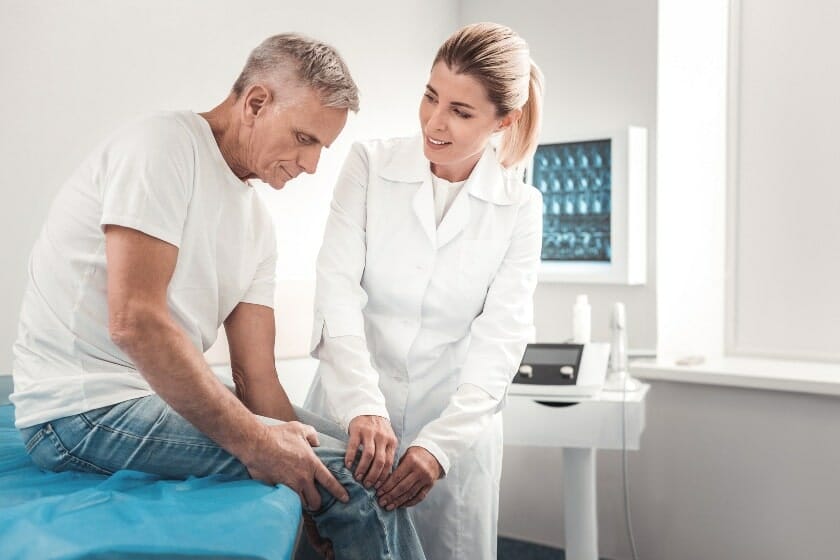
If you aren’t experiencing sudden weakness or pain and can tell that your knee weakness is largely related to an inactive lifestyle, then you’ll want to make those lifestyle changes first and foremost.
This will include a home exercise program and healthy diet to start. If you’re not sure where to start with these areas, it can be helpful to consult with your doctor in order for them to help make the right referrals, such as to see a physical therapist, personal trainer or nutritionist.
Knee weakness with knee pain is a different situation. If you can’t recall a trauma, but you’ve had knee pain and weakness persisting for more than 1-2 weeks, then go see your doctor. Don’t let the pain get worse.
On the other hand, if you’ve had a known trauma and there is sudden and severe pain associated with it, you need to seek medical attention immediately, such as in the emergency room, where additional imaging and testing can be done.
If you experience gradual knee weakness without pain, but your symptoms extend beyond just the knees, then you need to see your doctor right away.
If you experience sudden weakness, even without pain, for no known cause, plus have additional widespread symptoms as was discussed above, then you need to seek medical attention immediately, such as at the emergency room.
How Do You Strengthen a Weak Knee?
When we’re dealing purely with a straightforward situation of knee weakness related to deconditioning, or maybe you’re in the later recovery phases of an orthopedic injury, it can be helpful to know which strengthening exercises will help to strengthen the knees.
While there are many exercises to choose from, we’re going to take a look at the following 10 exercises that key in on specific muscles that directly connect to the knees in one way, shape or form.
1. Long Arc Quad
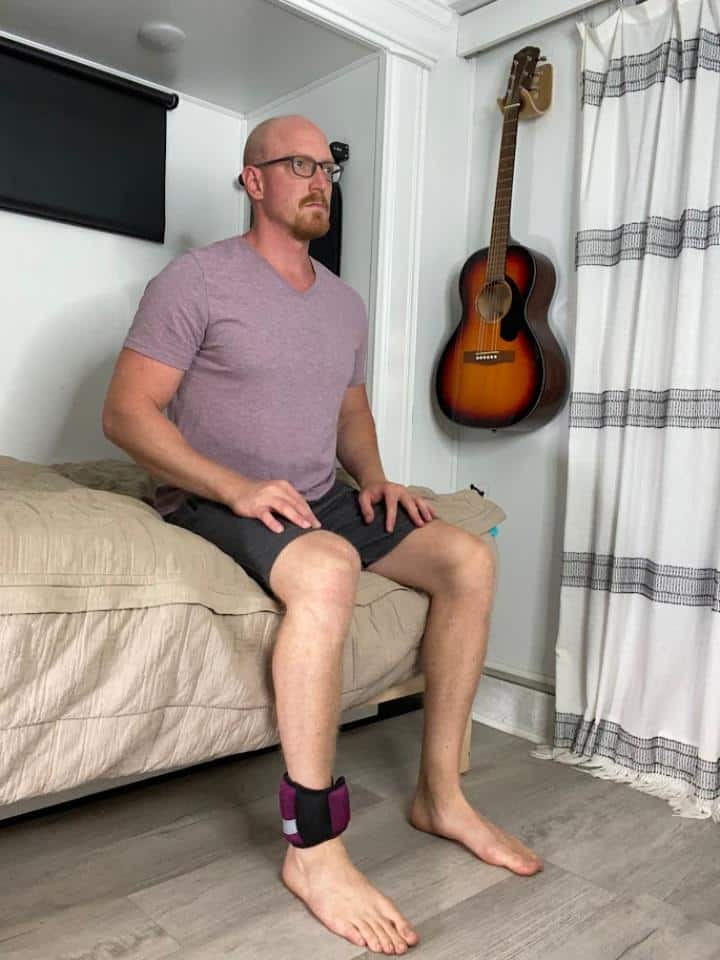
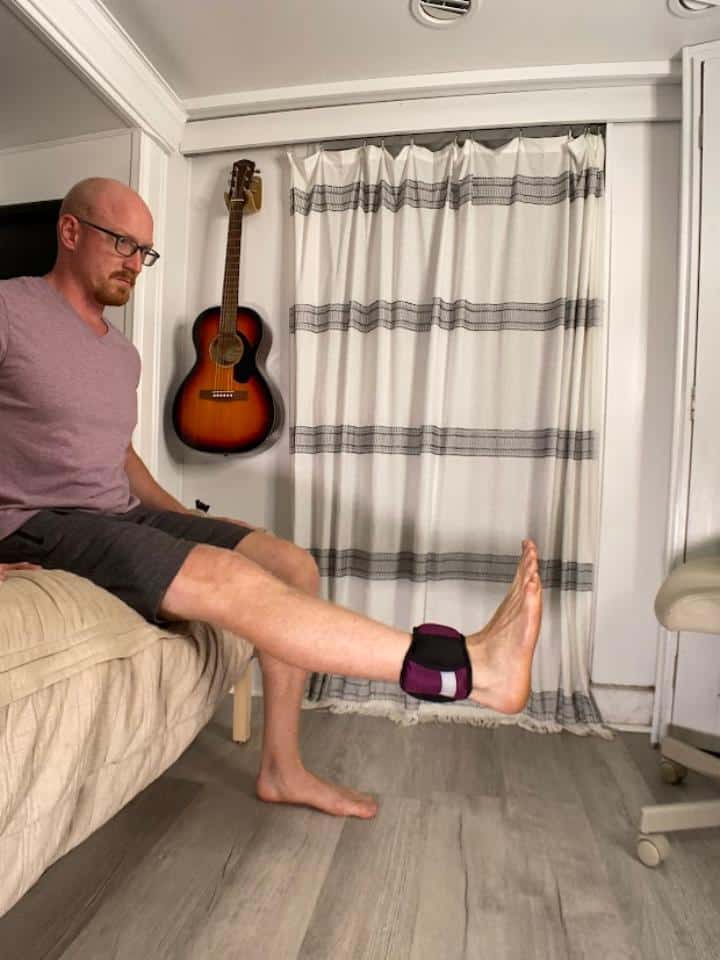
This exercise targets the quadriceps muscles in the front of the thighs.
- It will be performed in sitting. You’ll use either a small ankle weight (2-5# range) or can tie a resistance band around the ankles (light, medium, or heavy resistance).
- Sitting tall in your chair with the feet flat on the floor, kick one foot off the floor while straightening the knee.
- Hold at the top of the kick for 2 seconds, then return to your starting position.
- Repeat 10-15x for 2-3 sets on each leg.
2. Squat
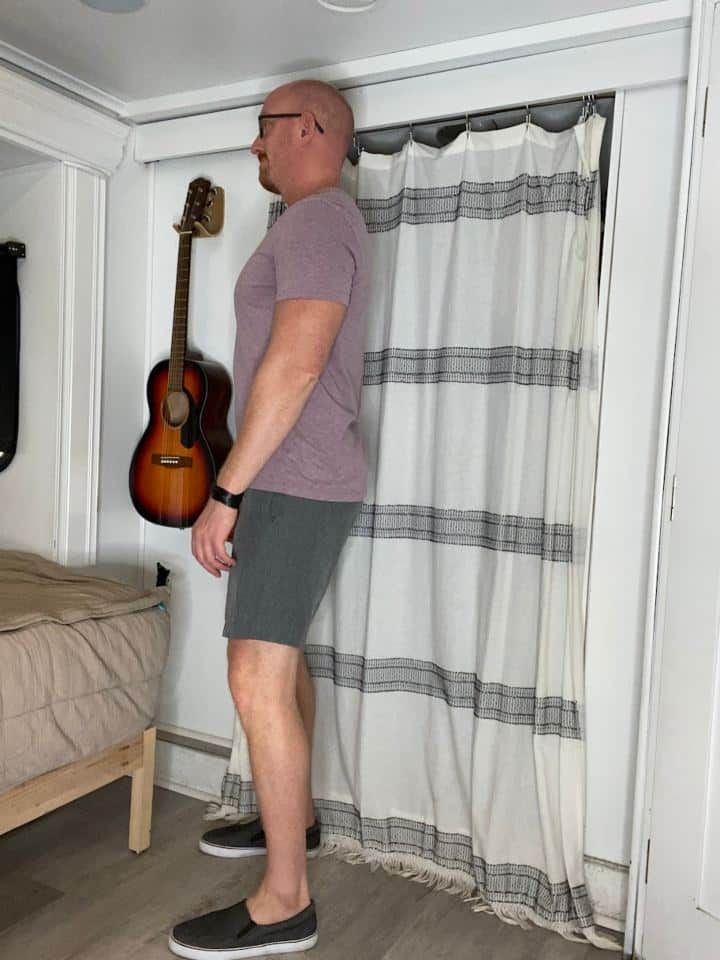
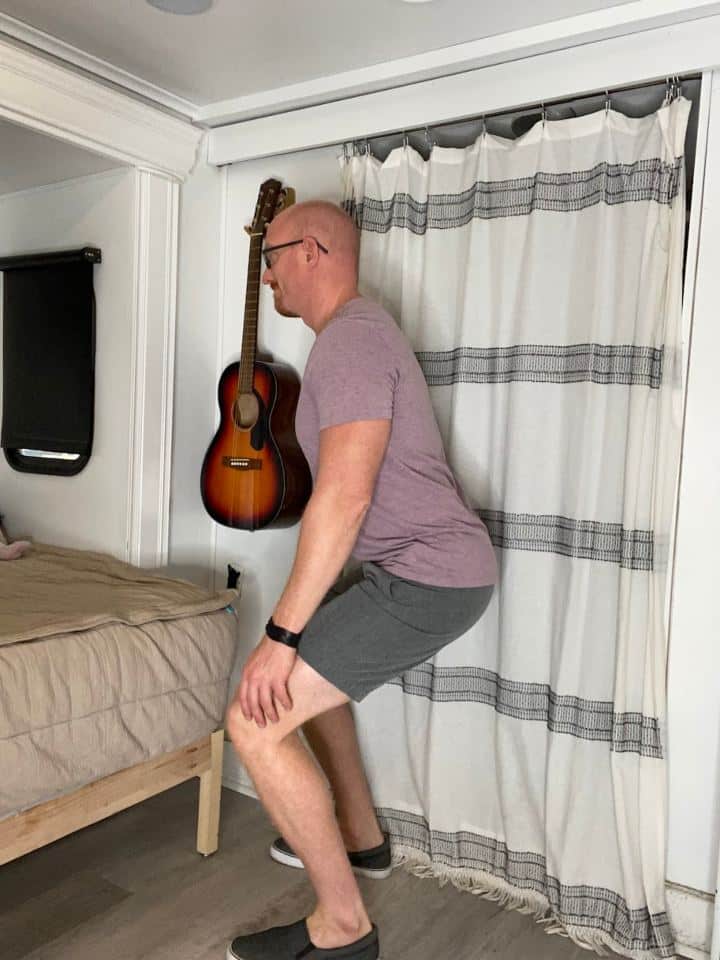
Ah squats… Some feel they can be your best friend or your worse enemy… but they really are a great exercise for the quadriceps and glutes! IF done the right way…
- For a proper squat, position the feet about hip-width apart with the toes pointing forward.
- Slowly sit the hips back towards the heels as the knees begin to bend. Your torso should hinge forward to counterbalance your hips sitting back towards the heels.
- Bend the knees as far as you’re comfortable with, hold for 2 seconds, then return to your starting position.
- Repeat 10-15x for 2-3 sets.
As mentioned above, some people intentionally avoid squats because they can be a little intimidating if you’re not sure how to do them. Or maybe you feel like your legs aren’t strong enough to handle a squat. If this is the case, there’s an easy squat progression you can perform to build your confidence and strength gradually.
Take a look at the following video to learn this easy squat progression.
3. Forward Lunge
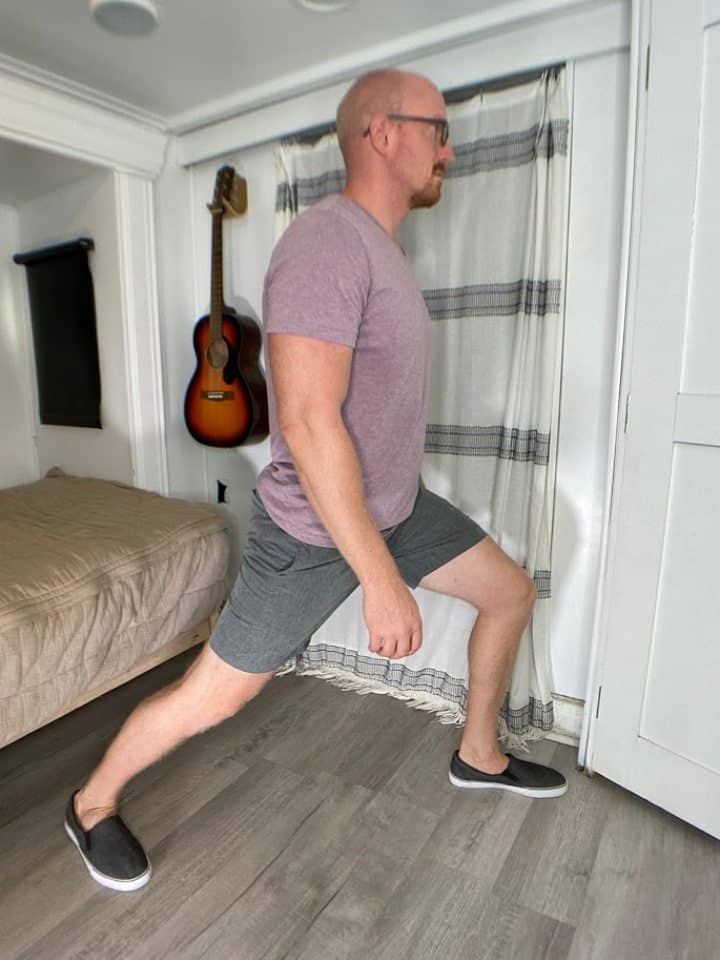
A forward lunge is another great one for the quadriceps and glutes, in particular. You can perform a forward lunge stationary or in motion. We’ll start with the basics of a stationary forward lunge.
- Position yourself in a large stance with one foot forward and the other behind you. The back heel should be off the ground.
- If necessary, stand next to something sturdy, such as your countertop, for balance support.
- Bend the knees and hips as far as you feel comfortable with to move into your lunge.
- Hold for 2 seconds, then return to your starting position.
- Repeat 10-15x for 2-3 sets on both legs.
If this becomes too easy, and you’d like to advance to a walking forward lunge, check out the following video for a demonstration of how to do a walking forward lunge the right way.
4. Seated Hamstring Curl
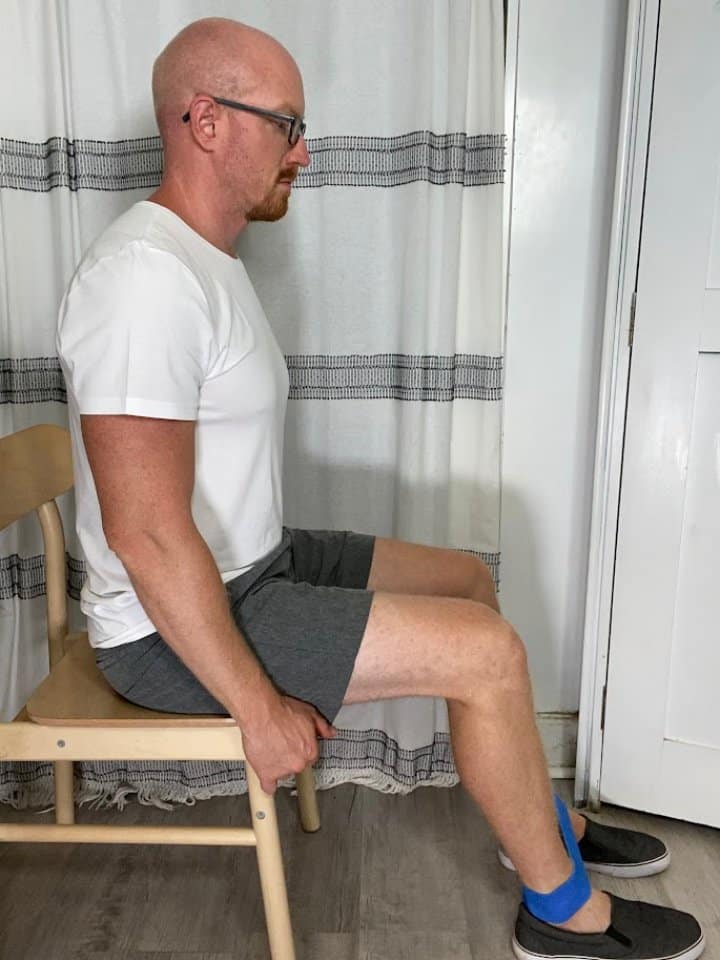
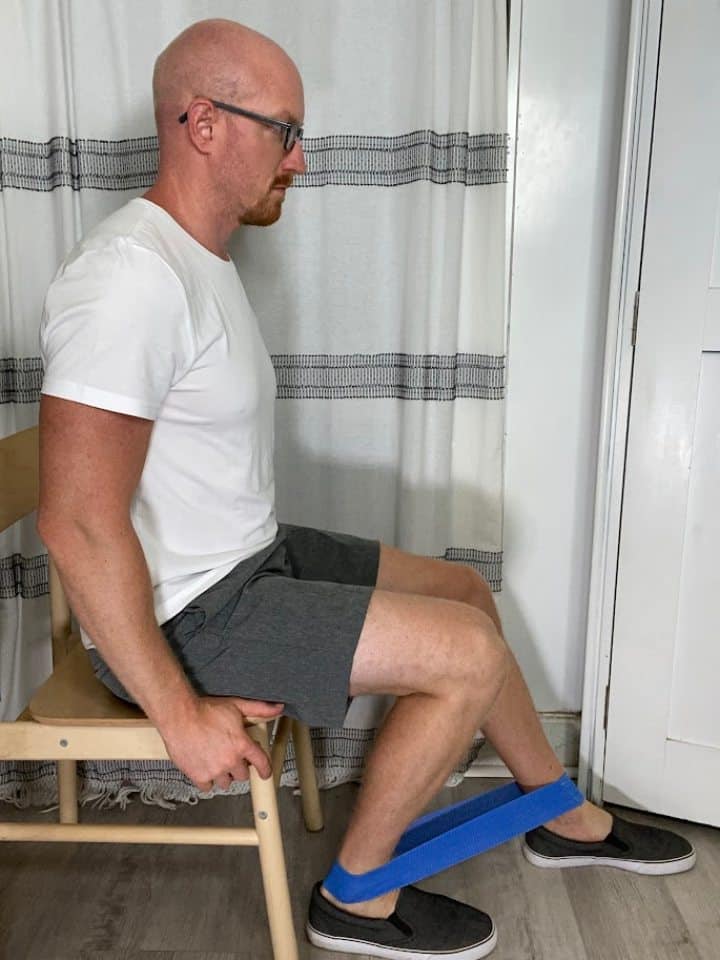
A seated hamstring curl, just like its name says, works the hamstring muscles located in the back of the thigh.
- You can do a seated hamstring curl with an ankle weight (2-5#) or with a resistance band tied around the ankles (light, medium or heavy resistance).
- Beginning with the feet flat on the floor, slide the foot on the working leg back towards you while simultaneously bending the knee.
- Hold for 2 seconds, then return to your starting position.
- Repeat 10-15x for 2-3 sets on both legs.
5. Lateral Walk
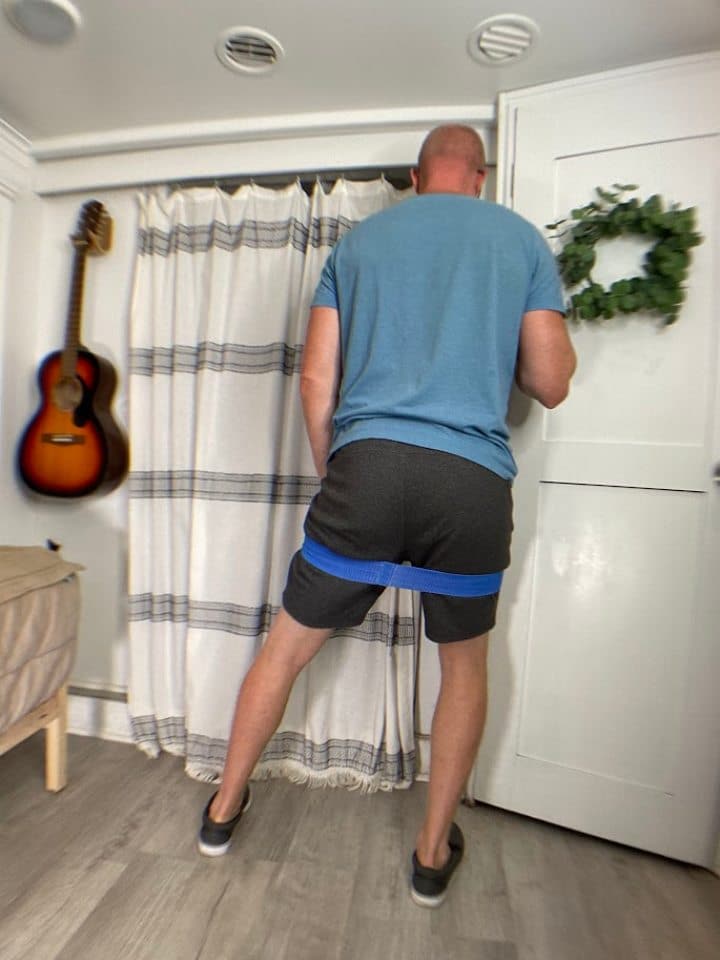

A lateral walk is excellent for targeting the outer hips muscles, known as the hip abductors, which are very important for helping to stabilize the knee joints.
It’s helpful to perform a lateral walk in an open space, but near a sturdy surface in case you need additional balance support. Along a countertop is a good option for this.
- Tie a resistance band around the legs while the feet are close together (light, medium or heavy resistance). You can tie the band around the thighs (easier option) or around the ankles (harder option).
- Once the band has been tied, allow the knees to relax into a slightly bent or flexed position.
- Begin side walking along the countertop. Don’t worry about taking large steps with this. Once you reach the end of the countertop, begin walking sideways in the opposite direction.
- Repeat 4-5 laps back and forth along the countertop.
6. Double Leg Calf Raises
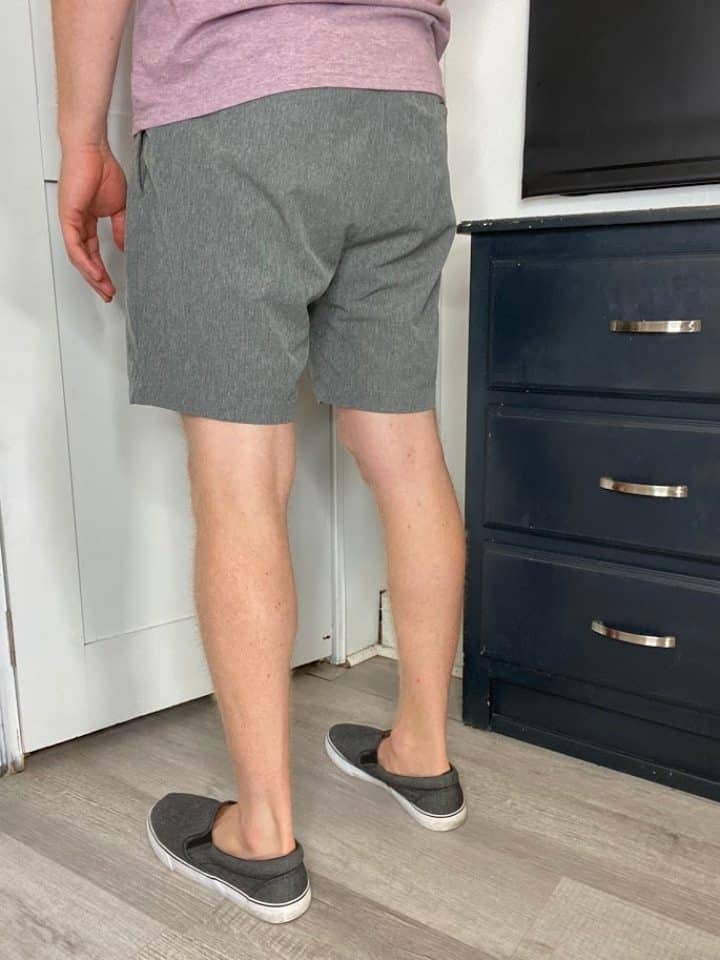
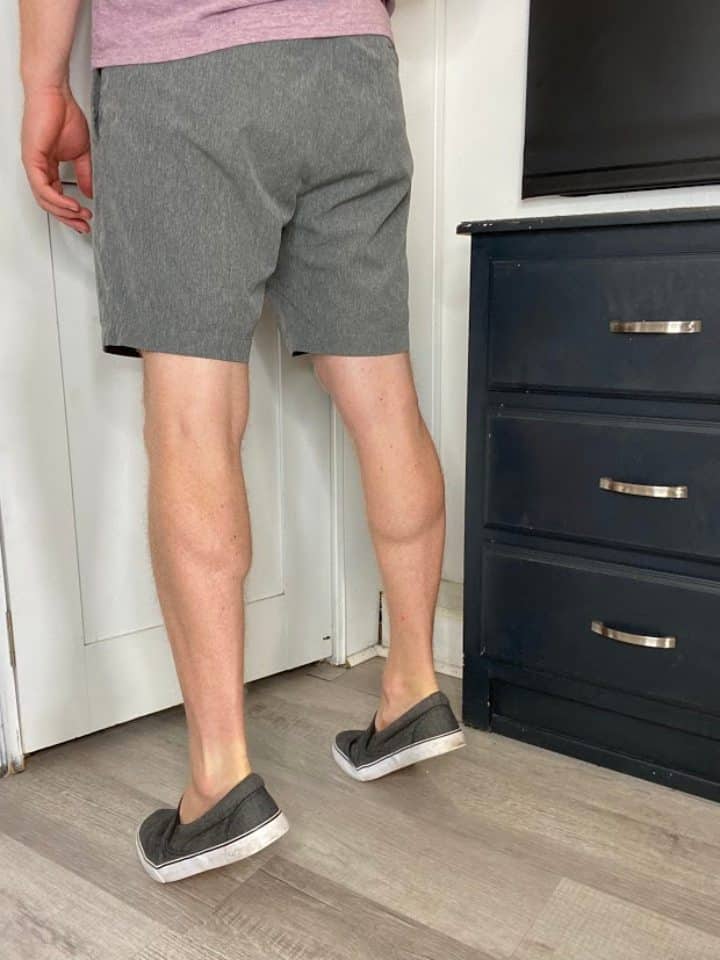
Calf raises target the muscles in the back of the calf, especially the gastrocnemius. We care about this because this muscle also attaches to the back of the knee.
We’ll be focusing here on a simple double leg calf raise.
- Stand with the feet side-by-side with a little space between them. You can again use something sturdy to support yourself for balance purposes.
- Slowly lift the heels off the floor as high as you can without bending the knees, then lower back down to where you began.
- Repeat 10-15x for 2-3 sets.
7. Bridge


Strong glutes are important for many reasons, but glute weakness can actually contribute to a lack of support and stability in the knees.
A bridge is a classic glute strengthening exercise. While you can perform either a double leg or single leg bridge, we’re going to focus on a standard double leg bridge here.
- Lay on your back on the floor, your bed or couch (whatever you’re most comfortable with!). Have your knees bent with your feet flat on the floor.
- Press down into the floor through the middle of the feet as you lift the hips off the ground. Lift your hips as high as you can, hold for 2 seconds, then return to your starting position.
- Repeat 10-15x for 2-3 sets.
8. Forward Step Ups
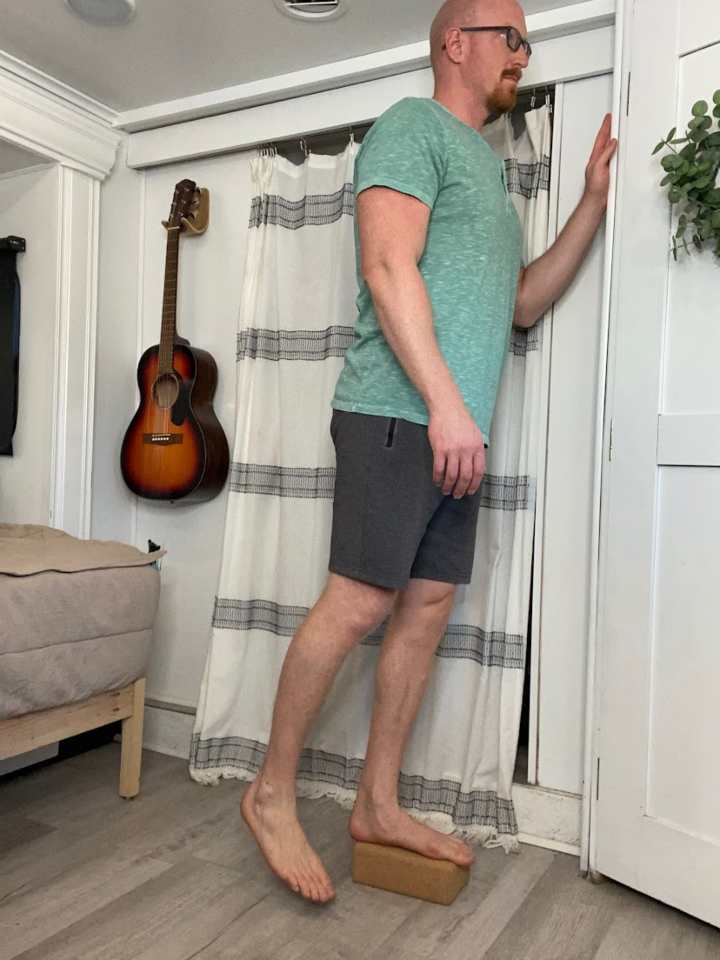

Step ups are a great way to strengthen the knees, especially keying in on the quadriceps and glutes.
- For a forward step up, find a step anywhere form 4-6″ high. Stand next to something sturdy if you can for balance support.
- If you don’t have an actual step available, you can use a hardcover book of some kind (you might have to get creative!).
- Facing the step, place one foot on it, while the other foot remains on the floor.
- Step up onto the step as strong and quick as you can, then slowly lower back down to your starting position.
- Repeat 10-15x for 2-3 sets on each leg.
9. Lateral Step Ups
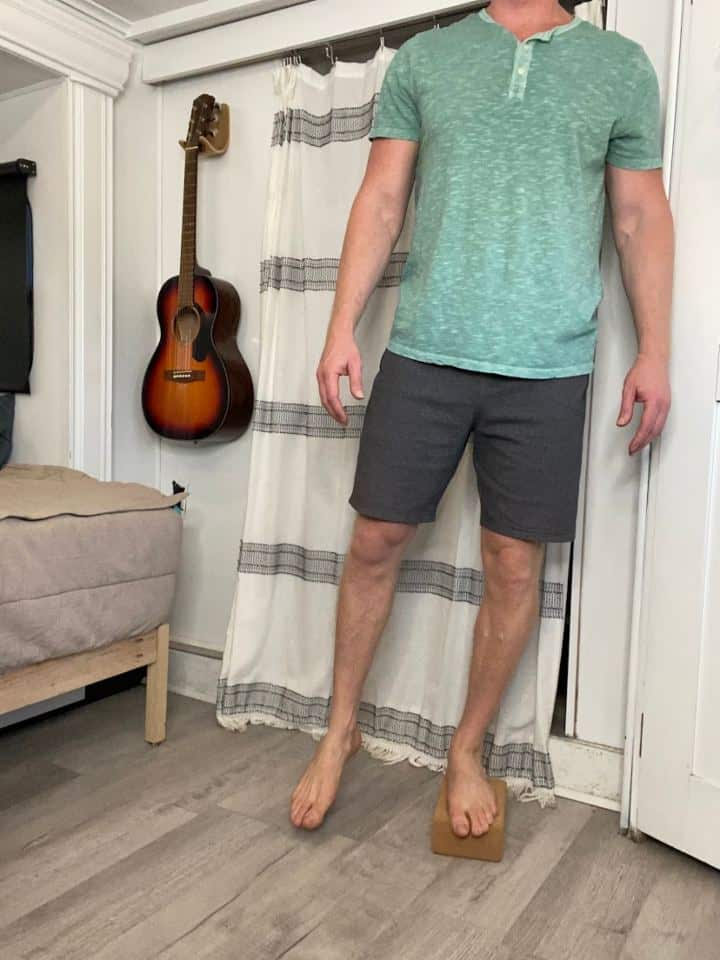
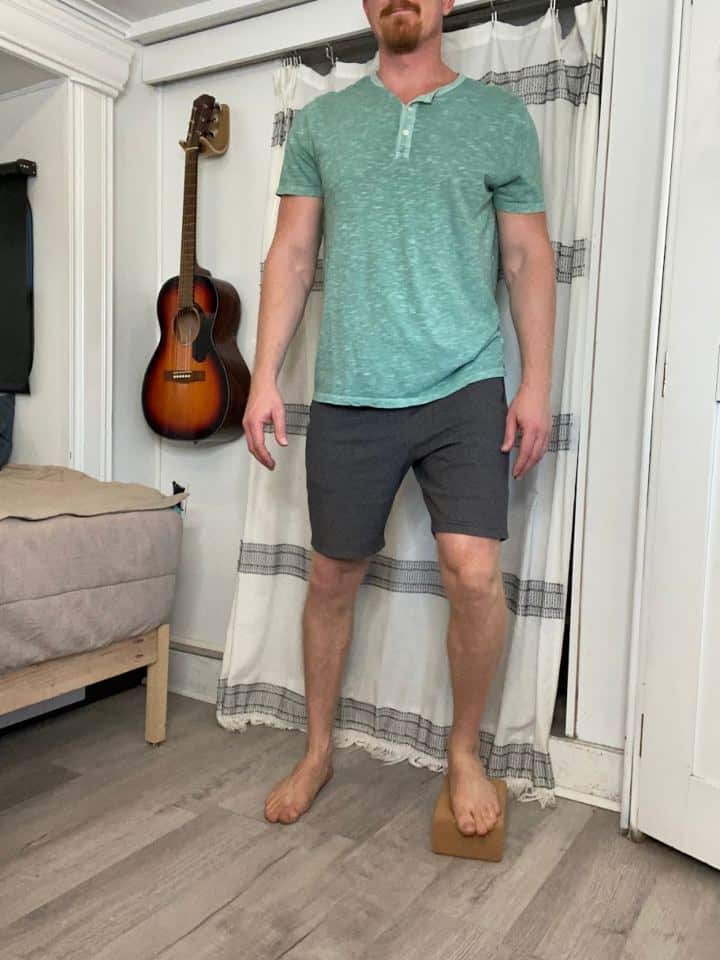
A lateral step up will have you stepping up sideways, which will help to target the hip abductors a little more.
- Using the same type of set up as described for a forward step up, for the lateral step up simple stand sideways next to the step. The leg closes to the step will be positioned on the step.
- Step up laterally as strong and quick as you can, then slowly lower back down to your starting position.
- Repeat 10-15x for 2-3 sets on each leg.
10. Sidelying Hip Abduction
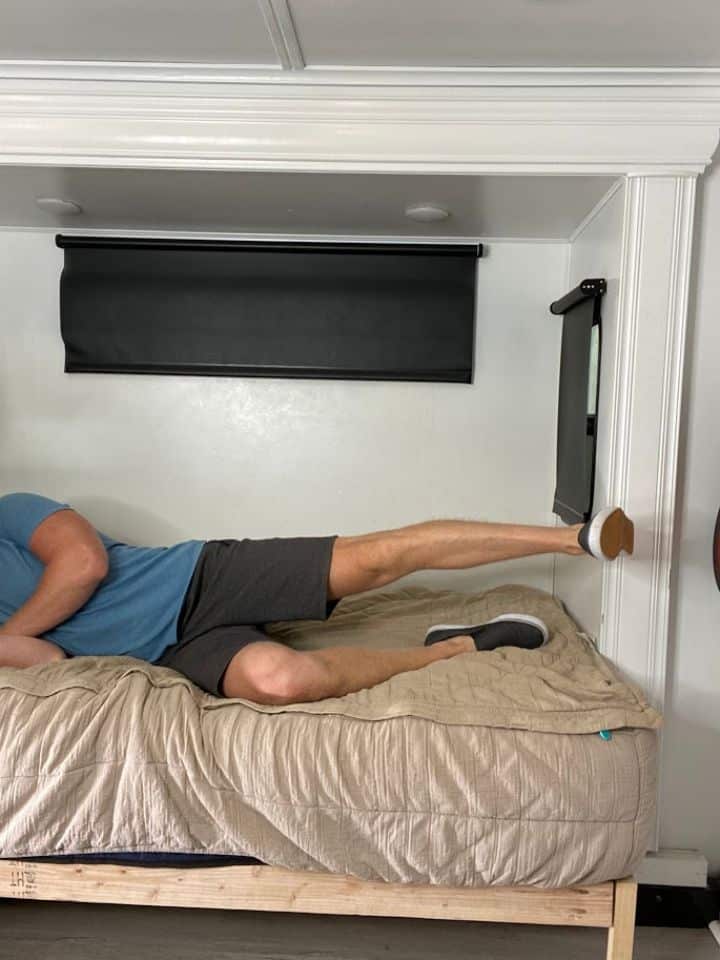
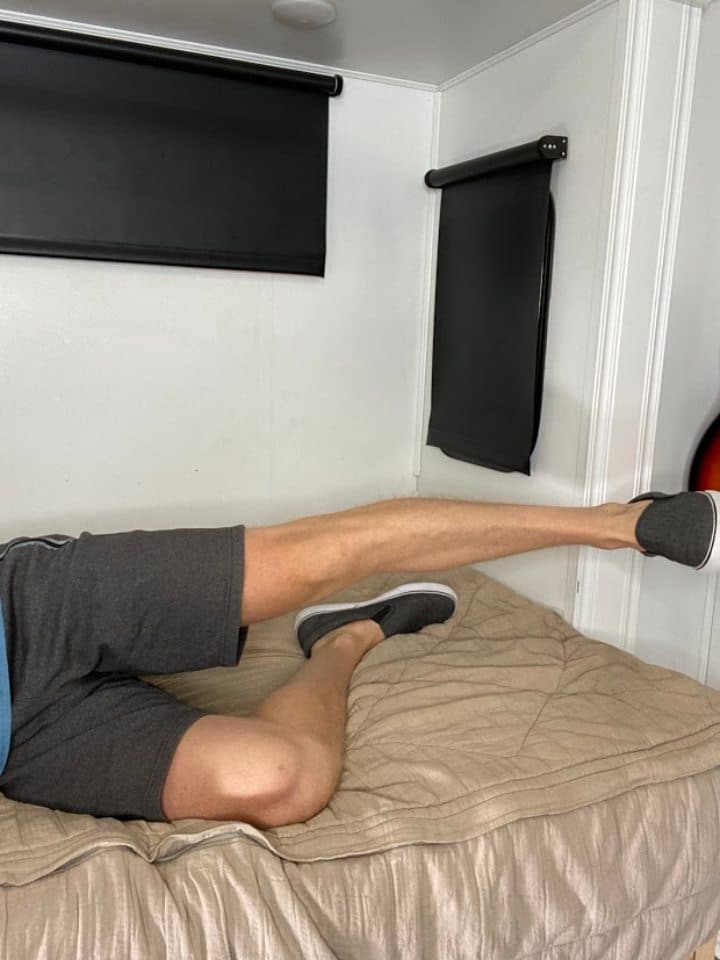
Sidelying hip abduction will focus on the hip abductor muscles.
- You can lay on your side on the floor, your bed or couch. While the bottom leg can be bent, make sure the top leg is in a straight line with your torso.
- Keeping the top knee straight, kick the leg to hip level, hold for 2 seconds, then return to your starting position.
- Repeat 10-15x for 2-3 sets on each leg.
Temporary Solutions to Help with Weak Knees
While working on a long-term solution for your weak knees with your healthcare provider, there are some temporary solutions that can be helpful for non-emergent knee weakness.
The primary goal of these temporary solutions is to provide enough support and stability for your knees to avoid knee buckling and to help increase your activity tolerance.
1. Knee Brace
It’s common to wonder if you should wear a knee brace for knee weakness.
A knee brace is a definite option, but still ultimately a temporary solution, while trying to build up your knee strength. The biggest thing is to try and avoid wearing the brace all the time, otherwise, your knee will rely on the brace to support it versus making the knee support itself.
It can be initially helpful to use the brace during exercise or when you know you’ll be on your feet for longer periods when fatigue might kick in.
2. Knee Taping
Taping the knee can work similar to a knee brace, except taping can sometimes feel more flexible and a little more incognito compared to a brace.
There are many types of tape and taping techniques out there that can be used for knee support and stability. These may target specific muscles or may be a general application around the knee itself.
Take a look at the following video which will demonstrate how to tape the quadriceps. Remember, the quadriceps are one of the most important muscles for keeping your knees strong and supported.
Similar to a knee brace, try not to get used to using knee taping all the time. It’s meant to be a temporary solution while you’re in the process of re-training your knee to support itself.
3. R.I.C.E.
If you’re dealing with a minor orthopedic knee injury with mild symptoms, then the R.I.C.E. method is a good starting point for recovery. This can be applied for overuse injuries, mild sprains and strains.
Make sure to rest, ice, compress and elevate the injured area. This will help to control any pain, swelling and inflammation present.
If you do the R.I.C.E. method for a week and your symptoms are not improving, make sure to see your doctor for a further in-person assessment.
Be Proactive with Your Knee Strength
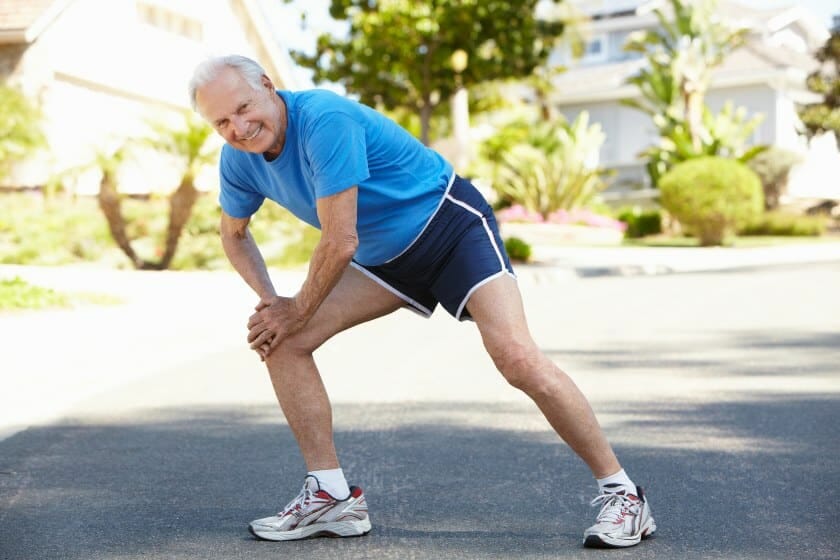
While we’ve been talking about possible causes and how to address knee weakness once it occurs, keep in mind that living an overall healthy lifestyle is the perfect way to help prevent weak knees to begin with!
By promoting a healthy level of daily activity, exercises, and a healthy diet, your knees will absolutely thank you and be ready to take on anything.
FAQ:
Is walking good to strengthen the knees?
Yes. Any low impact cardio exercise is excellent for helping to strengthen the knees. This can include walking, biking, and water aerobics.
Can weak knees be related to a vitamin deficiency?
Possibly. Any concern of a vitamin or any nutrient deficiency should be discussed with your doctor.
How long will it take to strengthen my muscles?
Depending on the cause of your knee weakness, you can expect on average up to 8 weeks or more to really notice strength gains.

